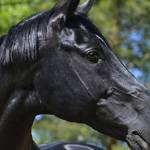Breed of Horse Makes a Difference in Disease Reaction

A Percheron doesn’t look like an Arabian, and a Rocky Mountain horse doesn’t move like a Thoroughbred. The genetic variations that dictate body type and gaits also extend to characteristics that determine each horse’s response to an immune system challenge, and there is evidence that some disease signs are common to particular breeds and not to others.
Unvaccinated horses of several breeds, including Lipizzans and Quarter Horses, were studied after an outbreak of equine herpesvirus-1 (EHV-1) in Croatia. Horses infected with this virus can show various signs such as respiratory illness, neurologic impairment, and abortion in pregnant mares. Among the affected Lipizzans, 17 of 32 mares aborted their fetuses, while only 4 of 40 affected Quarter Horse mares aborted. Neurologic impairment was noted in 15% of affected Quarter Horses, but in only 3% of Lipizzans. Finally, no Lipizzan mares died from the infection, but the disease was fatal to 10% of affected Quarter Horse mares.
Though disease signs and severity may differ among breeds, all horses are susceptible to infection with EHV-1. Keeping vaccinations current can lessen the signs of (but can’t reliably prevent) EHV-1 infection. Quarantining all horses entering or returning to a premise can minimize (but also can’t reliably prevent) bringing infection onto a property.








